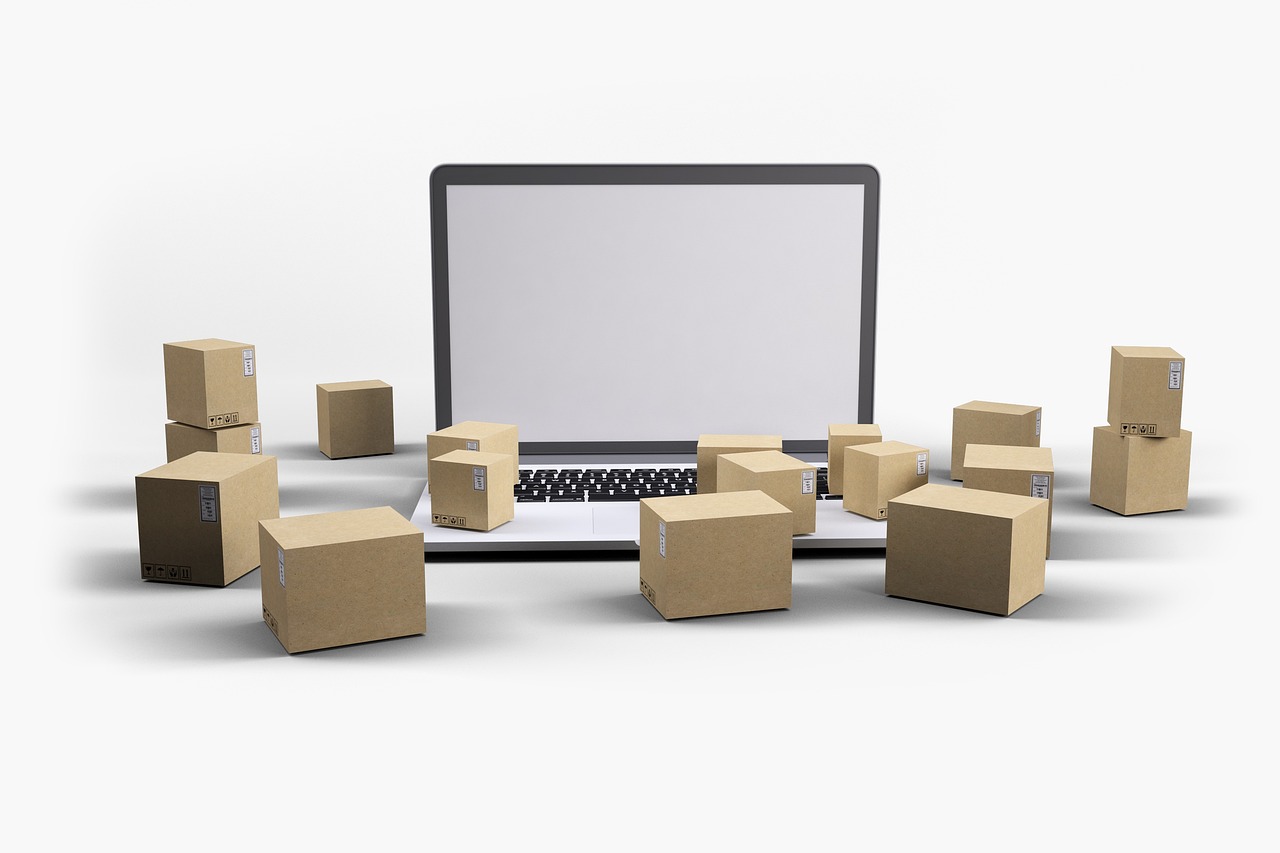The Pros and Cons of Distributed Inventory Management
January 30, 2024 - 11 minutes readRetailers can improve delivery times by balancing supply chain complexity with customer service.

If you are continually amazed by online retailers like Amazon who can offer one or two day delivery for nearly every available product, you are not alone. As top retailers master the art and science of logistics, the real secret of their success is found in dispersed fulfillment centers and distributed inventory management practices. Do the obvious benefits of these practices mean everyone in the E-Commerce ecosystem can improve their responsiveness and agility in a similar way?
The distributed inventory approach requires significant planning, investment, and maintenance to meet customer expectations, so it is not for everyone. We take a closer look at the pros and cons of distributed inventory management to provide some additional insights.
“Nothing is particularly hard if you divide it into small jobs.” – Henry Ford
What is distributed inventory management?
Distributed inventory management is the practice of establishing and maintaining multiple storage and distribution facilities for physical goods. Fulfillment center locations are strategically selected to position inventory closer to potential end customers. The features of a distributed inventory management system include:
- A centralized database: Distributed inventory management systems are anchored by the inventory management software used to store, analyze, and share essential information from and between locations.
- Inventory nodes: The warehouses, retail stores, and other facilities that make up the distributed inventory network are known as inventory nodes. While these nodes operate collectively, each may have distinct staffing, regulatory, and logistical requirements based on the region, size, and type of node.
- Security systems: Physical and digital security measures are top distributed inventory management concerns when diverse facilities require their own individual access controls and endpoint security protocols.
Benefits of distributed inventory management
Retailers and E-commerce businesses of all types and sizes can benefit from distributed inventory management and the convenience that comes from placing products close to the customer. The advantages of distributed inventory management include:
1. Faster delivery
In a recent survey, online shoppers ranked speed of delivery as their second most important factor, just behind free shipping. By offering both important benefits to customers, pioneers like Amazon have set the bar high for other online retailers. Placing physical inventory closer to customers is the most effective way to reduce shipping times by shortening delivery routes.
Shorter distances also reduce delivery expenses for the retailer, especially for large or heavy items like machinery and furniture. Minimizing long interstate routes also helps reduce carbon emissions, which are driven higher by the E-commerce/home delivery trend.

2. Distributed risk
A centralized warehouse creates a single point of failure that is vulnerable to everything from natural disasters to cyberattacks. Splitting inventory between locations allows retailers to prepare for unforeseen conditions and continue to fulfill orders even if one location is temporarily out of commission. Additional risk factors that are mitigated by distributed inventory management include:
- Supplier performance issues
- Transportation labor shortages
- Demand fluctuations and stockouts
- Regulatory changes
3. Cross-border fulfillment
When an E-Commerce retailer sells and delivers a product from one country to a customer residing in another, this is known as cross-border fulfillment. Despite today’s global online marketplace, over 40% of shoppers are likely to abandon their carts when they realize they are shopping on an international website. This apprehension is based on concerns over customs delays, taxes, and unpredictable delivery schedules.
Distributed inventory management alleviates these concerns by placing additional fulfillment centers within the countries where the orders are placed. This strategic approach reduces shipping time and expense while enhancing customer trust and brand reputation.
4. Customer satisfaction
A distributed inventory model is not successful unless it leads to more satisfied customers and repeat business. Faster delivery times and reduced backorders help to improve customer sentiment while creating a competitive edge over online retailers with slower fulfillment times.
Distributed inventory locations also make it easier to penetrate new markets. For example, if your business originated as a small brick-and-mortar establishment in California, setting up an active inventory location in New York will proactively support an East Coast marketing launch.
“Exceed your customer’s expectations. If you do, they’ll come back over and over. Give them what they want – and a little more.” – Sam Walton
Drawbacks of distributed inventory management
Maintaining a network of strategic inventory locations allows many online retailers to overcome common inventory management challenges. Retailers with high sales volumes, a dispersed customer base, and products that are difficult to ship over long distances can realize the benefits of a distributed model almost immediately.
At the same time, the drawbacks associated with distributed inventory management prove it is not the right strategy for every business.
1. Added complexity
Distributed inventory management adds new layers of logistical complexity that must be navigated successfully. Coordinating the movement of products between dispersed locations, maintaining inventory security infrastructure within and between sites, and supervising employees at multiple facilities are among the complexities that arise when a business moves away from a single site model.
The best order management software platforms reduce complexity by pulling and analyzing data from multiple locations simultaneously to make informed storage and fulfillment decisions.
2. Additional overhead
Cost is another important consideration for retailers considering a shift to distributed inventory. Many small businesses are unable to support the upfront and ongoing expenses associated with new facilities and additional inbound freight.
The redundancy required for distributed inventory management also increases overhead. Duplicate items are stored and monitored, inventory audits are conducted more frequently, and additional forklifts, computers, and other equipment must be maintained. Third party distribution partners can defray some of these costs by providing scalable infrastructure and personnel on a subscription basis.
3. Integration Issues
Beyond the order management and inventory control systems that must be interconnected successfully between sites, distributed inventory management involves the integration of numerous other processes. Each region may have different regulatory, security, and environmental issues that are addressed individually while remaining under unified control.
When third-party partners are engaged, integration can be further complicated by differing software solutions and communication practices. However, these third parties can also be a valuable source of information and guidance when testing systems to verify successful integration.
4. Quality control
Quality control (QC) is the process of ensuring products maintain an acceptable level of quality through inspection and testing processes. Beyond the appearance and function of a product, customers also assess quality based on their purchasing, communication, and delivery experiences. Optimizing quality control with distributed inventory means providing a consistent customer experience regardless of where the fulfillment originated.
Standardized processes, training, and regular audits can promote consistency among locations while improving quality and brand reputation.
The future of distributed inventory management
Much like the cellular networks that are gradually shifting from centralized cores to edge data centers close to the customer, the distributed inventory trend is likely to continue well into the future. Technologies that will reshape distributed inventory management include:
- The internet of things (IoT): Radio frequency ID (RFID) tags placed on inventory items allow the exact position of each item to be tracked without a direct line of sight. Real-time data made possible by the IoT will improve synchronization between locations and allow more fulfillment activities to be automated.
- Autonomous vehicles: As the technology and reliability improve, driverless vehicles will become a fixture of the distributed inventory ecosystem, with driverless truck platoons, autonomous stackers and forklifts operating in the warehouse, and mobile delivery hubs set up to transfer goods from trucks to drones or self-driving cars.
- Artificial intelligence (AI): Machine learning and predictive analytics will continue to influence distributed inventory management by improving forecasting to optimize stocking levels. AI will also support automated warehouse operations that improve safety and efficiency.
Distributed inventory management: Final thoughts
Distributed inventory management has put Amazon, Alibaba, and other industry giants on the map, while elevating expectations for customers. These hugely successful companies developed networks of strategically dispersed inventory nodes through years of investment and hard work. With the trail successfully blazed, the tools are now available for E-commerce businesses of any size to establish their own distributed inventory infrastructure.
By allowing retailers to sell in more places but manage in one, the cloud-based Agiliron product portfolio supports distributed inventory management with mobile-friendly, scalable solutions that integrate seamlessly with all your favorite E-commerce applications.
Distributed inventory management is made easier with the help of versatile, cloud-based inventory management software. We can help you weigh the pros and cons of distributed inventory management and decide if it is right for your business. Contact us today and allow one of our solution experts to help you with this important decision.
Tags: Business Management, inventory management